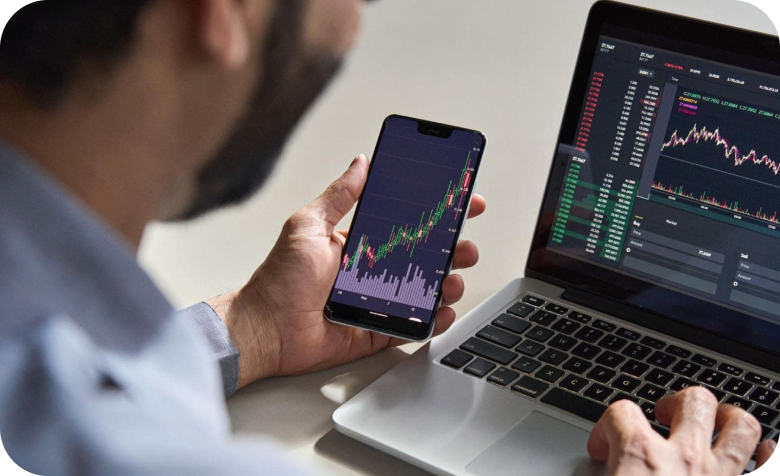- Ausbildung
- Technische Analyse
- Technische Indikatoren
- Volumenindikatoren
- Money Flow Index
Money Flow Index - MFI Indikator
Gebrauch von Money Flow Index auf der Handelsplattform
Gebrauchsanweisung für Money Flow Index
Der Indikator kann verwendet werden, um zu erkennen, ob ein Vermögen übergekauft oder überverkauft wird sowie die möglichen Wendepunkte zu bestimmen.
Analyse von Bereichen (übergekauft/überverkauft):
- Wenn MFI über 80 klettert, wird das Vermögen übergekauft. Ein Verkaufsignal erscheint, wenn MFI die übergekaufte Bereichsgrenze von oben durchquert;
- Wenn MFI unter 20 fällt, wird das Vermögen überverkauft. Ein Kaufsignal erscheint, wenn MFI die überverkaufte Bereichsgrenze von unten durchquert.
Analyse von Divergenzmustern:
- Die Erhebung von MFI mit abnehmenden Preisen deutet an, dass der Abwärtstrend schwach werden kann;
- Der Sturz von MFI mit steigenden Preisen deutet an, dass der Aufwärtstrend schwach werden kann.

Money Flow Index (MFI) Indikator
Berechnungsformel für den Indikator Money Flow Index
Folgende Schritte sind für die Berechnung des Indexes erforderlich: 1. TP = (H + L + C) / 3; 2. MF = TP*Vol; 3. MR = Sum(MF+) / Sum(MF-); 4. MFI = 100 – (100 / (1 + MR)) wo: TP – typischer Preis; H – aktuelles Hoch; L – aktueller Tief; C – Schlusskurs; MF – Geldbewegung (positive (MF+) if current TP > previous TP, negative (MF-) otherwise); Vol – Volumen; MR – Geldverhältnis.
Forex Indicators FAQ
What is a Forex Indicator?
Forex technical analysis indicators are regularly used by traders to predict price movements in the Foreign Exchange market and thus increase the likelihood of making money in the Forex market. Forex indicators actually take into account the price and volume of a particular trading instrument for further market forecasting.
What are the Best Technical Indicators?
Technical analysis, which is often included in various trading strategies, cannot be considered separately from technical indicators. Some indicators are rarely used, while others are almost irreplaceable for many traders. We highlighted 5 the most popular technical analysis indicators: Moving average (MA), Exponential moving average (EMA), Stochastic oscillator, Bollinger bands, Moving average convergence divergence (MACD).
How to Use Technical Indicators?
Trading strategies usually require multiple technical analysis indicators to increase forecast accuracy. Lagging technical indicators show past trends, while leading indicators predict upcoming moves. When selecting trading indicators, also consider different types of charting tools, such as volume, momentum, volatility and trend indicators.
Do Indicators Work in Forex?
There are 2 types of indicators: lagging and leading. Lagging indicators base on past movements and market reversals, and are more effective when markets are trending strongly. Leading indicators try to predict the price moves and reversals in the future, they are used commonly in range trading, and since they produce many false signals, they are not suitable for trend trading.
Große Auswahl an Handelsplattformen für alle Geräte

Not sure about your Forex skills level?
Take a Test and We Will Help You With The Rest


